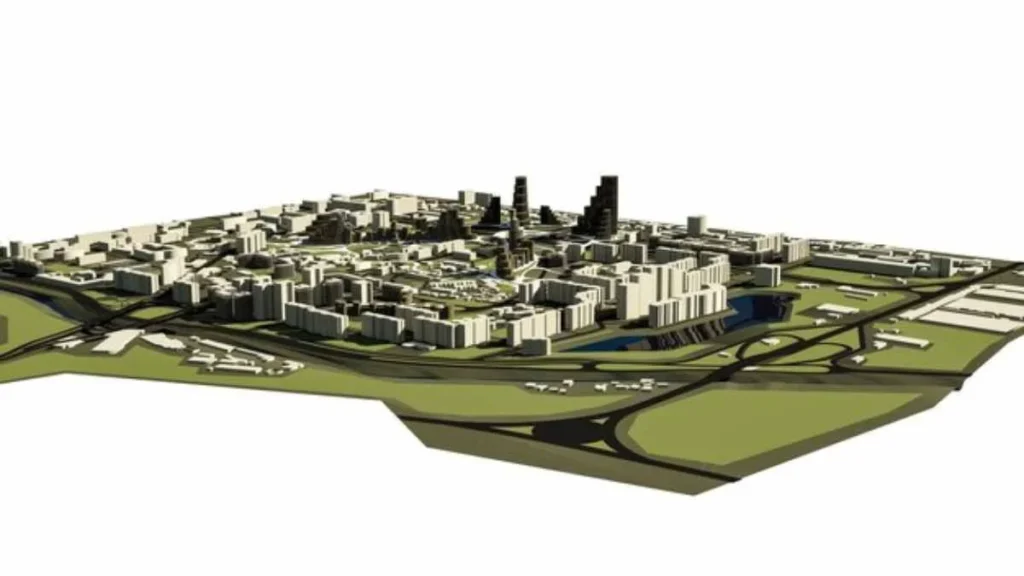GENERAL
Digging Deep: How Mega Projects Shape the Urban Landscape

Mega projects are the backbone of urban transformation, fundamentally altering a city’s landscape. These large-scale endeavors, whether they be towering skyscrapers, expansive transportation networks, or massive urban parks, play a pivotal role in shaping the environment and influence how we live, work, and move within urban spaces.
In this blog, we’ll explore how mega projects shape cities, focusing on the processes, impacts, and future implications for urban development. We’ll discuss the strategic planning involved, the challenges faced, and the lasting legacies they leave. Whether you’re an urban enthusiast, a student of city planning, or simply curious about how these colossal projects come to life, this post will provide valuable insights into their monumental impact.
Table of Contents
The Magnitude of Mega Projects
Mega projects redefine cities on both a physical and cultural level. From New York’s Hudson Yards to London’s Crossrail, these initiatives are ambitious, costly, and often span many years in development. They require meticulous planning, significant financial investments, and collaboration between public and private sectors.
Although mega projects can face setbacks in execution, their potential benefits make them worthwhile for cities. These benefits range from improved infrastructure to heightened economic activity through job creation, and a global reputation boost that can attract tourism and business investment.
Despite their complexity, cities continue to pursue mega projects because of their ability to significantly enhance urban living. By providing modernized facilities and iconic landmarks, they can increase property values and improve residents’ quality of life.
Strategic Vision Behind Mega Projects
The planning and execution of mega projects require a clear strategic vision. City planners and developers must set long-term goals, assess potential risks, and identify key stakeholders. This process involves balancing economic growth with social inclusion, environmental sustainability, and cultural preservation.
Incorporating public input is crucial to ensuring that these projects meet community needs. Engaging with local residents through consultations and public hearings can help shape the design and functionality of mega projects, fostering a sense of ownership and pride among citizens.
Furthermore, integrating technology and innovation in the planning stages can optimize efficiency and sustainability. Utilizing digital modeling tools, smart city solutions, and sustainable building materials can reduce construction time, minimize environmental impact, and enhance the overall user experience.

The Role of Infrastructure
A critical aspect of mega projects is the development and enhancement of infrastructure. By upgrading transportation systems, utilities, and public services, cities can accommodate growing populations and support economic expansion.
For instance, the excavation in Salt Lake City for its extensive light rail network has allowed for increased connectivity and reduced traffic congestion. This type of infrastructure development not only improves accessibility but also promotes sustainable urban growth by encouraging public transit use over car dependency.
Infrastructure plays a vital role in uniting different parts of a city, creating cohesive urban environments that foster social interaction and economic exchange. By investing in infrastructure, cities can ensure that mega projects benefit both present and future generations.
Economic Impact and Job Creation
Mega projects have a substantial economic impact on cities. They generate employment opportunities during construction and operation, boosting local economies and providing a source of income for residents.
Job creation extends beyond direct employment, as mega projects stimulate growth in related industries such as manufacturing, logistics, and hospitality. This ripple effect can lead to increased consumer spending, higher tax revenues, and strengthened economic resilience.
Furthermore, successful mega projects attract business investments by enhancing a city’s global reputation as a thriving, innovative, and forward-thinking destination. This can result in increased foreign investment, tourism, and trade, further elevating the city’s economic standing.
Environmental Considerations
Mega projects have a significant environmental footprint, necessitating a focus on sustainability in design and implementation. Urban developers must carefully consider the potential ecological impacts and strive to minimize harm to natural habitats and resources.
Incorporating green spaces, energy-efficient technologies, and sustainable building practices can help offset environmental impacts while enhancing the quality of urban life. By prioritizing eco-friendly solutions, cities can reduce their carbon footprint, conserve resources, and promote a healthier environment for residents.
Environmental considerations also extend to climate resilience. Mega projects must be designed to withstand climate-related threats such as rising sea levels, extreme weather events, and natural disasters. This requires adaptive infrastructure and forward-thinking planning to ensure long-term sustainability and safety.
Social and Cultural Impacts
Mega projects have the power to transform cities’ social and cultural landscapes. They can create vibrant public spaces that foster community engagement, enhance cultural expression, and promote social cohesion.
Integrating cultural elements into mega project design can celebrate a city’s unique heritage and identity, attracting tourists and fostering a sense of pride among residents. This can be achieved through public art installations, cultural centers, and event spaces that encourage interaction and cultural exchange.
However, mega projects can also pose challenges to social equity and inclusivity. Developers must work to ensure that these projects benefit all residents, regardless of socio-economic status, by providing affordable housing, accessible public amenities, and opportunities for local businesses.
Challenges and Controversies
Mega projects often face numerous challenges and controversies, ranging from budget overruns and construction delays to public opposition and environmental concerns. Addressing these issues requires transparent communication, adaptive decision-making, and collaborative problem-solving.
Community engagement is critical in overcoming resistance and building public trust. By involving stakeholders in the planning process and addressing their concerns, developers can foster a sense of ownership and mitigate opposition.
Balancing competing interests is another challenge faced by mega project developers. Navigating the complex web of political, financial, and social factors necessitates flexibility, diplomacy, and strategic foresight.
The Legacy of Mega Projects
The long-term legacy of mega projects extends beyond their immediate impact on urban landscapes. These ambitious undertakings can redefine a city’s identity, shaping its future trajectory and influencing subsequent generations.
Successful mega projects serve as catalysts for further development, inspiring innovation and setting new standards for urban design and sustainability. They leave a lasting mark on the city, contributing to its cultural, economic, and environmental vitality.
However, the legacy of mega projects is not always positive. Some projects may fall short of their intended goals, resulting in underutilized infrastructure, financial burdens, or social inequities. It is crucial for developers and city planners to learn from these experiences and apply lessons to future endeavors.
Future Trends in Mega Projects
As cities continue to grow and evolve, the nature of mega projects will also change. Emerging technologies, shifting societal values, and increasing environmental awareness will shape the future of urban development.
Smart city initiatives will likely play a prominent role in future mega projects, integrating digital solutions and data-driven insights to optimize efficiency, sustainability, and user experience. This will require collaboration between government agencies, private enterprises, and technology providers to develop innovative, interconnected urban environments.
Furthermore, the focus on sustainable development will continue to gain momentum. Mega projects must prioritize eco-friendly solutions and adaptive infrastructure to address climate change challenges and ensure long-term resilience.
Conclusion
Mega projects are powerful tools for shaping urban landscapes, driving economic growth, and enhancing the quality of life in cities. By understanding their complexities and potential impacts, city planners, developers, and stakeholders can harness their transformative power for the greater good.
For cities to thrive in the face of rapid urbanization and environmental challenges, they must embrace innovative approaches to mega project development. By prioritizing sustainability, inclusivity, and collaboration, cities can create vibrant, resilient urban environments that cater to the needs of current and future generations.
-

 GENERAL2 months ago
GENERAL2 months agoUncovering the World of кинокрадко: The Dark Side of Film Piracy
-

 GENERAL2 weeks ago
GENERAL2 weeks agoUnveiling the Art of преводсч: How Translators Bridge Language Barriers
-

 YOGA1 year ago
YOGA1 year ago4 Person Yoga Poses for Beginners
-

 GENERAL2 months ago
GENERAL2 months agoThe Journey of iamnobody89757: From Anonymous User to Internet Sensation


























